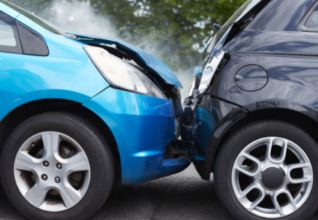Driver fatigue is one of the most serious dangers on Irish roads, yet it is one of the most overlooked and is a major factor in a significant number of road collisions every year. Being tired behind the wheel dramatically impairs your concentration, slows your reaction time and can lead to drivers nodding off without realising.
The Road Safety Authority (RSA) estimates that fatigue is a contributing factor in as many as 10-20% of road traffic collisions. Understanding the warning signs and knowing the correct way to respond is not just a suggestion; it is a critical part of being a responsible and safe driver.
What Is Driver Fatigue?
Fatigue can be defined as mental or physical impairment brought on by tiredness, or lack of sleep. For drivers, driving while fatigued can put you at risk of falling asleep behind the wheel which increases your chances of being involved in a car crash.
With research from the RSA suggesting that:
- Driver fatigue is a factor in as many as one in five fatal crashes in Ireland each year.
- Fatigue is a contributory factor in 10-20% of road traffic accidents.
- Tiredness related collisions are three times more likely to result in death or serious injury.
- 28% of drivers in Ireland admitted to falling asleep or nodding off behind the wheel, even if only briefly; increasing to 33% among people who drive for work, according to a 2020 study on driver behaviours.
Main Causes Of Driver Fatigue
According to the RSA, there are five main causes of driver fatigue:
Lack of Sleep or Poor Sleep
This is the most common cause. The average adult needs around 7-9 hours of sleep per night, according to HSE guidelines. However, it is not just the quantity of sleep that matters, but the quality. A night of interrupted or poor-quality sleep can be just as bad as getting too little sleep, leaving you feeling tired and at risk of fatigue.
Your Body’s Internal Clock
Everyone has an internal body clock, or circadian rhythm, which makes us naturally feel more tired at certain times of the day. During a 24-hour period, most people will typically feel a greater need for sleep during midnight and 4am, and between 2pm and 4pm. Driving during these periods, especially on a long journey, increases your risk of feeling drowsy.
Time Spent Driving
Any prolonged activity can lead to fatigue, and driving is no exception. Spending long hours behind the wheel, a common situation for professional drivers, leads to both physical and mental tiredness. This is often made worse by early starts or late finishes, which can disrupt a normal sleep pattern.
Lack of Stimulation (Monotony)
Tasks with high levels of repetition or predictability can lead to fatigue. Things like driving on a motorway where there is little change in scenery or traffic is an example of a monotonous task. When the road environment is predictable or familiar, our brains can become under-stimulated, which can bring on feelings of fatigue.
Individual Characteristics
Factors like age and physical condition can also influence how quickly we become tired, and how we cope with fatigue. Additionally, certain medications can cause drowsiness as a side effect, and underlying medical conditions may also contribute to a driver feeling fatigued more easily.
Who Is At Risk From Driver Fatigue
While anyone can be susceptible to driver fatigue, studies have shown that some groups are more at risk than others, these include:
- Young drivers
- Shift workers and people working night shifts
- Professional and commercial drivers
- People with medical conditions or sleep disorders, such as sleep apnoea
Warning Signs of Driver Fatigue
One of the greatest dangers of driver fatigue is that its effects can begin to impair your driving long before you feel you are about to fall asleep. It’s important to be able to recognise the warning signs of driver fatigue, which can be both mental and physical.
- Feeling sleeping or drowsy
- Constant yawning and a feeling of heavy eyelids.
- Difficulty concentrating or decreased ability to focus
- Finding your head nodding forward.
- Slower reaction times and blurred vision.
- Making errors, missing road signs or indecisiveness
- Drifting out of your lane or struggling to maintain a constant speed.
These are critical signs that you are experiencing driver fatigue and should stop and rest. Ignoring them puts you, your passengers and other road users at serious risk.
How to Combat Driver Fatigue
When tiredness begins to set in, many drivers are tempted to try and push through it using popular but ineffective tricks. Opening the window for a blast of cold air or turning up the radio might make you feel more alert for a minute or two, but they are actually doing nothing to fight the underlying cause of your fatigue.
The only effective short-term solution to driver fatigue is to rest. The Road Safety Authority promotes a simple and scientifically proven method to help you get to your destination safely if you start to feel tired.
- Stop. Find a safe place to pull over, such as a service station or a lay-by. Do not stop on the hard shoulder.
- Sip. Drink a caffeinated drink with 150mg of caffeine, like a cup of coffee.
- Sleep. Take a short nap for 15 to 20 minutes to allow the caffeine to take effect.
- Afterwards, get some fresh air and move around for a few minutes.
By the time you wake up from your short nap, you will feel the benefits of both the rest and the caffeine. Following this advice should allow you to drive for another hour or so, according to the RSA.
But remember: this is a temporary fix designed to get you safely to the end of your current journey. It is not a substitute for getting a proper night’s sleep.
Plan Ahead to Stay Alert
The best way to deal with driver fatigue is to prevent it from happening in the first place. For any long journey, a little planning can make all the difference to your safety.
- The most important thing is to make sure you get a full night of quality sleep before you are due to travel.
- If you are on any medication or need treatment for colds, flu or allergies, ask your GP or pharmacist about possible side effects, and whether your medication can impact your ability to drive. You can also ask about non-drowsy alternatives.
- Shift workers should make families and housemates aware of their shift patterns so they can adjust to your working hours. While this can be difficult, it is important they are aware of the need for adequate sleep.
- Prepare your journey properly and plan in advance where you can safely stop or take a break from driving, if you need to.
It is recommended that drivers take a 15-minute break from driving at least every two hours. If possible, share the driving with another insured driver, and finally, be mindful of any medications you are taking, as some can cause drowsiness.
Know The Risks of Driver Fatigue
Driver fatigue is a risk that every driver in Ireland faces, but it is also one that we can manage with awareness and planning. The key to staying safe is to listen to your body and recognise the warning signs of tiredness.
Resisting the urge to “push on” and instead taking the correct, proven steps to combat fatigue is the responsible choice. By getting enough sleep before a long journey, planning for regular breaks and knowing when to pull over, you are protecting not only yourself but everyone you share the road with. Remember, arriving safely is always more important than arriving on time.
Driver Fatigue
FAQS
Looking to Save On Your Car Insurance?
At KennCo, our car insurance cover offers competitive rates and valuable benefits, including a replacement car as standard. Get peace of mind knowing you’re fully covered.
Get a Secure Quote Today

Written by KennCo Staff
Approved by Marketing Manager Noel Gavin
